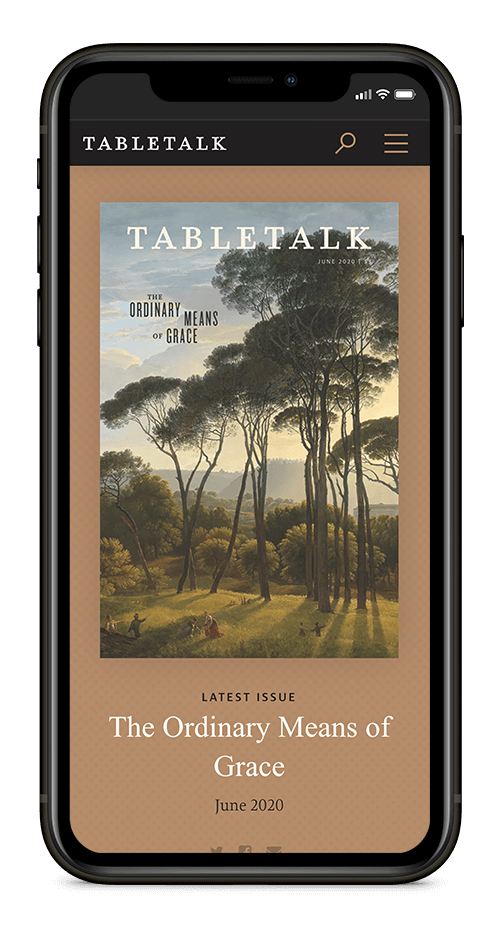
Request your free, three-month trial to Tabletalk magazine. You’ll receive the print issue monthly and gain immediate digital access to decades of archives. This trial is risk-free. No credit card required.
Try Tabletalk NowAlready receive Tabletalk magazine every month?
Verify your email address to gain unlimited access.
Exodus 26:31–37
“You shall hang the veil from the clasps, and bring the ark of the testimony in there within the veil. And the veil shall separate for you the Holy Place from the Most Holy” (Ex. 26:33).
Moses received directions directly from God for the tabernacle structure, as we have seen thus far in our study of Exodus 26:1–30. The instructions in those verses have focused on the outer aspects of the tabernacle, including frames for its walls and curtains that covered the frames as well as the extra curtains stretched out over the completed tabernacle to protect it from the elements. In today’s passage, the Lord describes aspects of the inside of the tabernacle as well as the screen that covered the entrance to the sanctuary.
In Exodus 26:31–33, we find instructions for the inner veil that separated the Holy Place from the Most Holy Place, and like the curtains for the walls of the tabernacle, it was made from blue, purple, and scarlet yarns, “with cherubim skillfully worked into it” (Ex. 26:31; see Ex. 26:1). The text does not give the dimensions of the curtain, but it was likely about fifteen feet high and fifteen feet wide. It took ten curtains coupled together to form the walls of the tabernacle (Ex. 26:1–6), but the inner veil was a single curtain. It was hung on “four pillars of acacia overlaid with gold,” stretched across the width of the tabernacle to divide it into two rooms, the Holy Place and the Most Holy Place (Ex. 26:32–33). Thus, as one commentator notes, moving past it was difficult, requiring the priest to move at least one of the edge pillars. The challenge of moving the veil to get behind it into the Most Holy Place protected the priests who ministered in the Holy Place. It was a fitting obstacle since the Most Holy Place could be entered only once a year, on the Day of Atonement, and then only the high priest could go behind the veil and minister before the ark of the covenant (see Lev. 16). The ark and its mercy seat were housed in the Most Holy Place, while the table of showbread and lampstand were located in the Holy Place (Ex. 26:34–35).
On the east side of the tabernacle, at its entrance, was a screen made of blue, purple, and scarlet yarns but without images of cherubim (Ex. 26:36). This was effectively the tabernacle’s door, and it was hung from gold-covered pillars of acacia wood in bronze bases (Ex. 26:37). The other pillar bases in the tabernacle were made of silver (Ex. 26:19, 21, 25, 32). Since the bases for the entrance curtain were farther away from God’s presence in the Most Holy Place, a metal less valuable than silver (bronze) was used. This showed Israel that the farther that one is from the Lord, the farther that one is from true glory and beauty.
Coram Deo Living before the face of God
The restrictions on access to God’s presence that we find in the tabernacle veil and entrance screen show us that we should never take approaching God lightly. We have freedom and boldness to enter His presence through Christ, but this is not arrogance. We must always come to God in humility, remembering that He is Creator and we are His creatures.
For further study
- Exodus 36:35–38
- Song of Solomon 4:1–3
- Song of Solomon 6:4–7
- Matthew 27:50–51